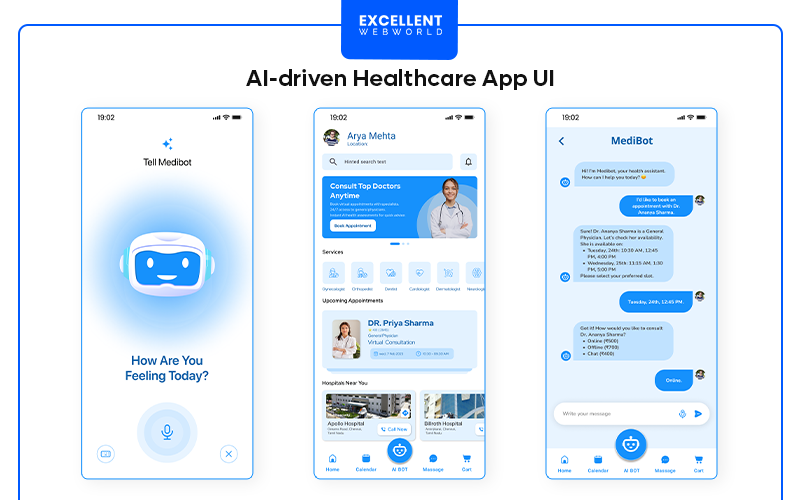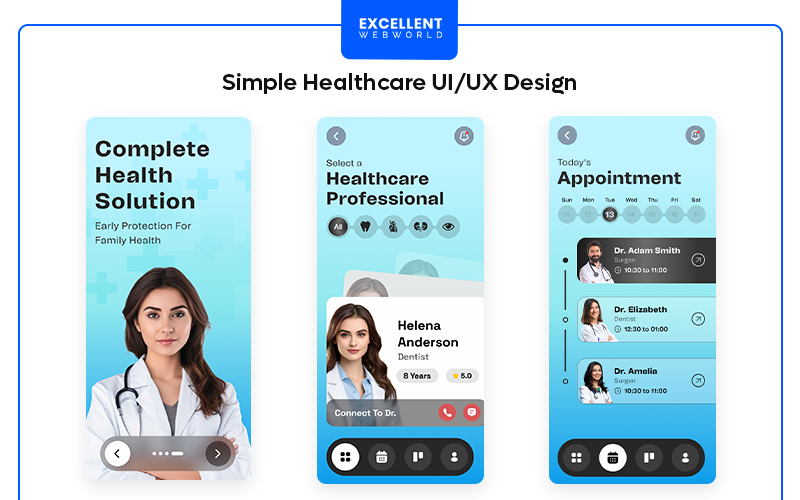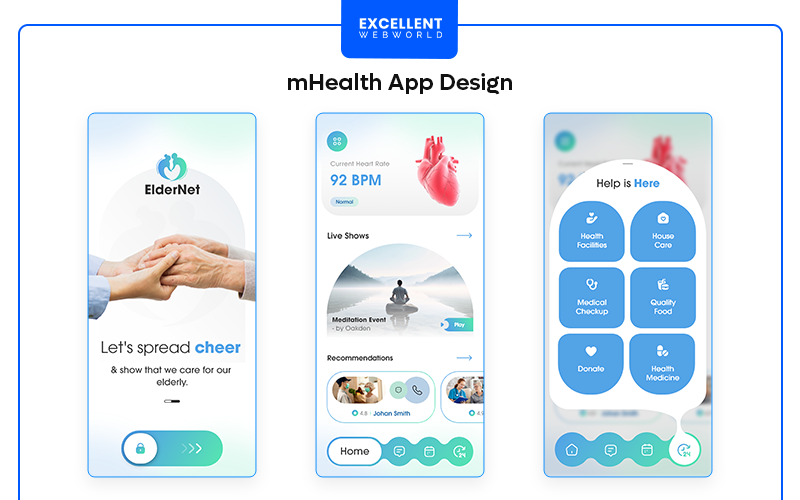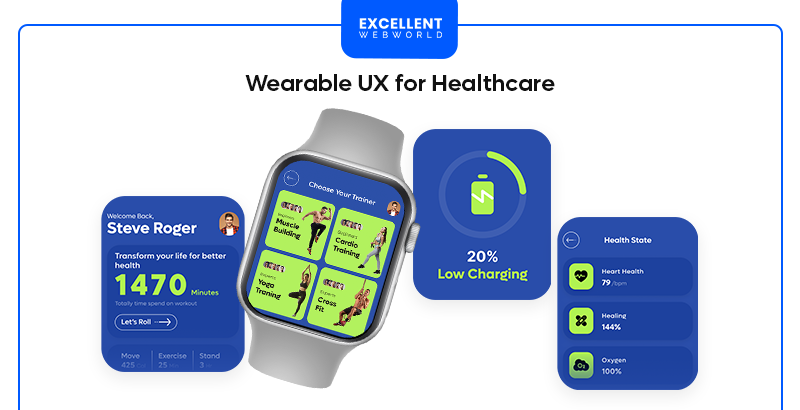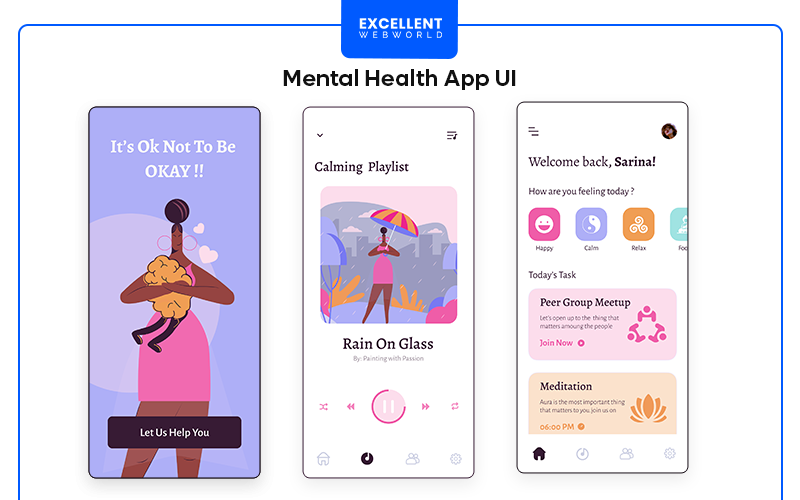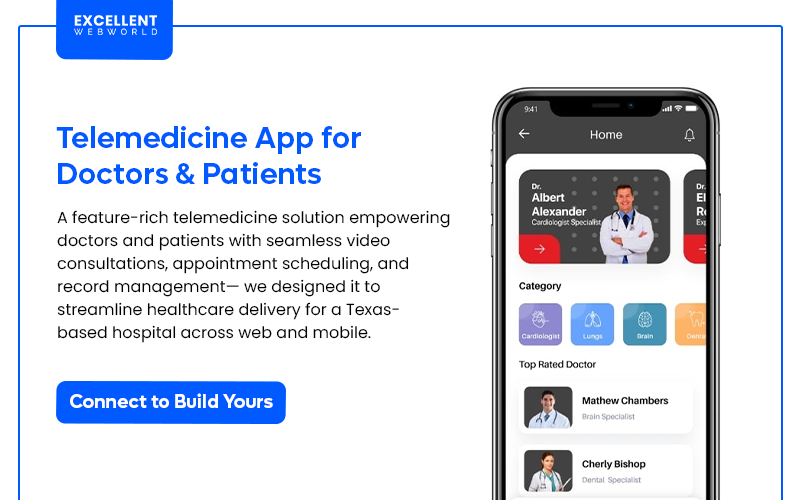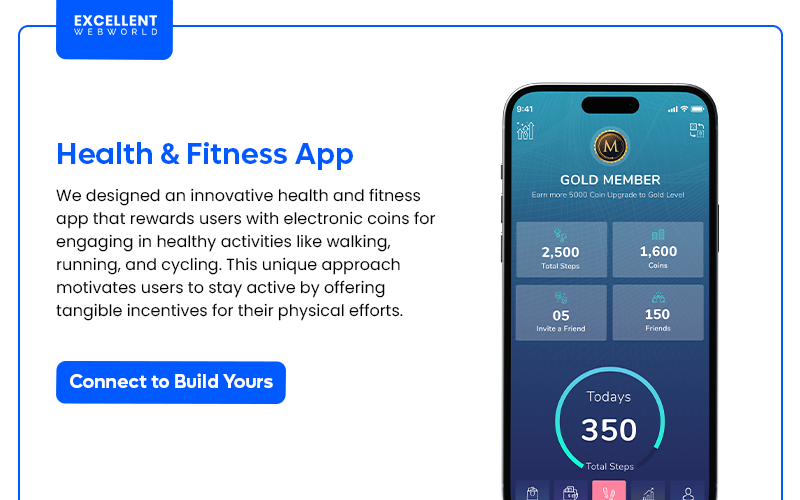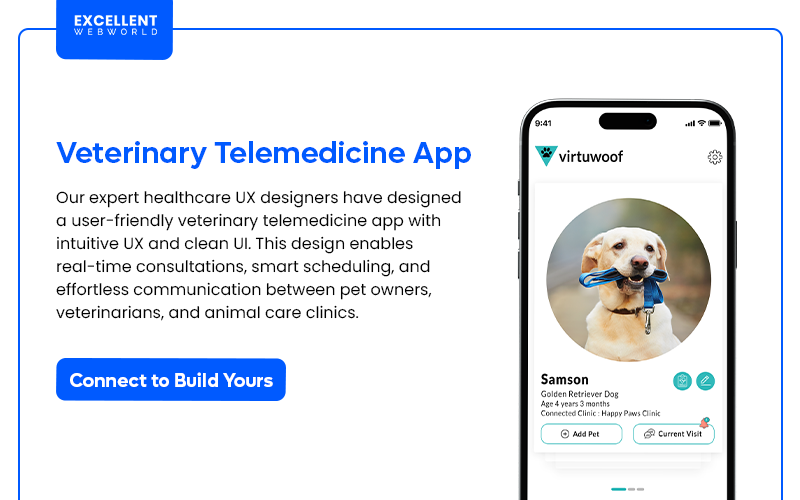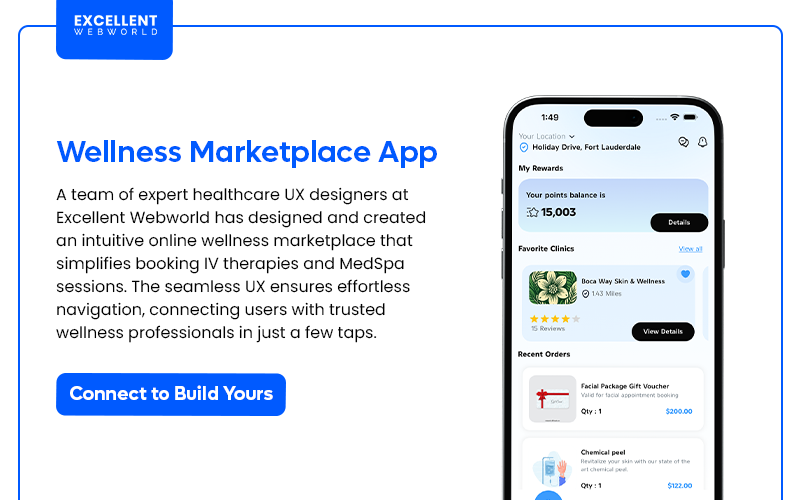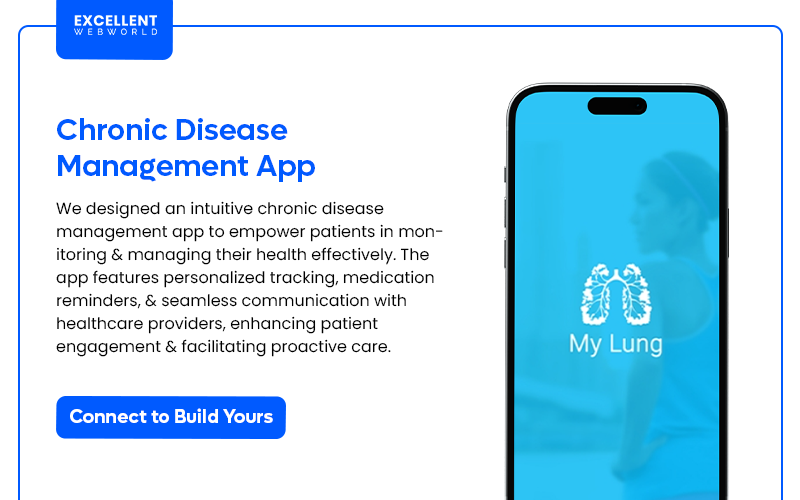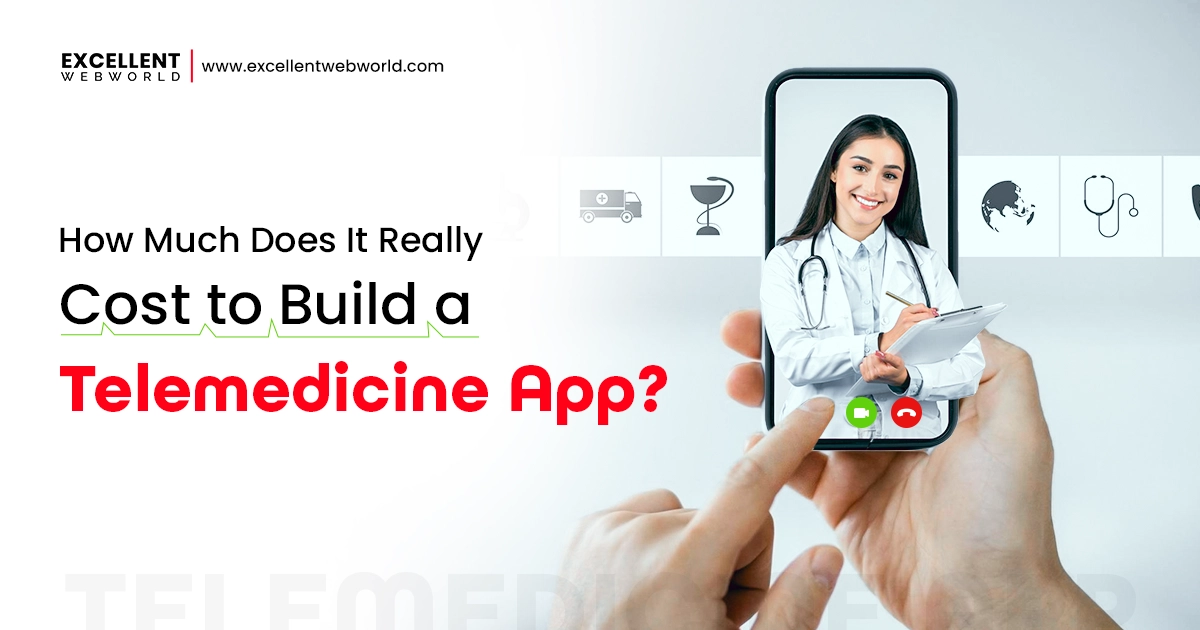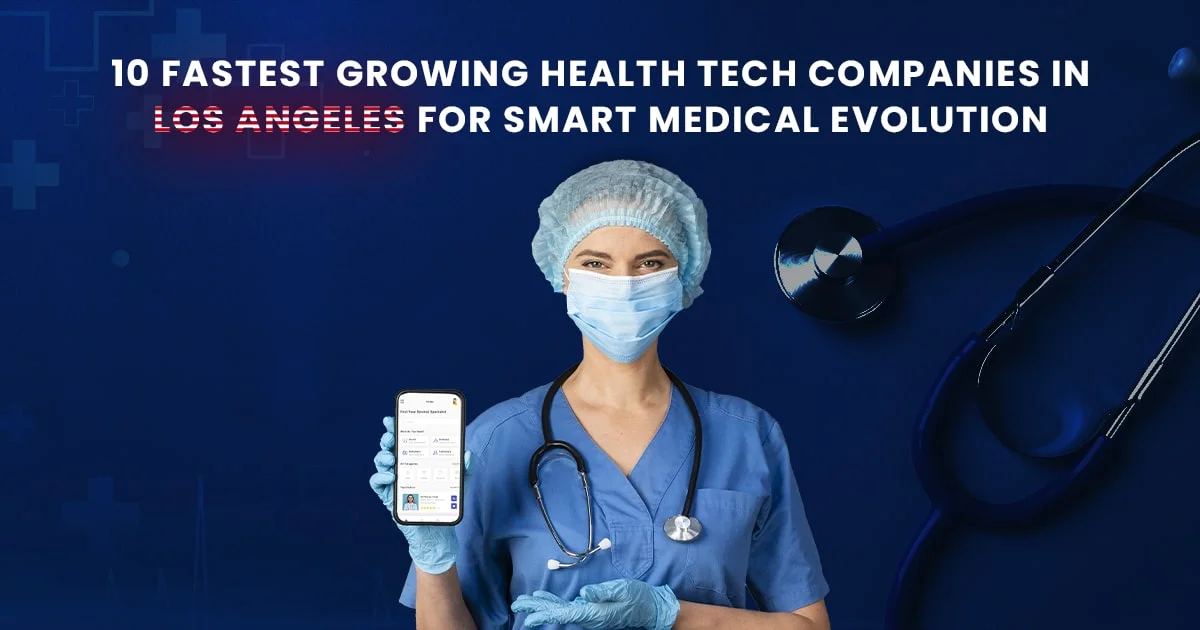Undoubtedly, the healthcare industry is growing rapidly with trending innovations like AI and digital tools. As per the World Economic Forum research, the healthcare sector is expected to reach a USD 504 billion market in 2026. Everything from telehealth platforms to wearable-connected devices, the latest telehealth trends are redefining how care is delivered. Among all this, implementing healthcare UX design trends plays an important role in enhancing patient experience and improving health outcomes.
As with every second organization, if you are also investing in healthcare application development, then focusing on user-centric designs that support both patients and medical professionals is crucial. Whether it’s mHealth app development, medical device UX design, or healthcare software, intuitive design is now a non-negotiable part of any successful digital health product. You can’t risk your patient engagement by ignoring UX design trends in the healthcare industry.
This article will help you find the top 7 UX design trends that really impact healthcare mobile app design and development in 2026. If you are a healthcare entrepreneur, medical professional, or UX/UI designer in the healthcare sector, learning about these trends will help you stay ahead of the competition.
Here are the 7 UX design trends shaping healthcare in 2026:
1. Personalized Experiences through AI and Data Analytics
Healthcare industry app development needs a touch of personalized care. That means your design should be appealing to your users and make them feel a personalized experience. Discover how AI and data-driven personalization are transforming healthcare UX by providing tailored experiences, predictive insights, and customizable dashboards that present individual patients’ needs.
A. AI-Driven Personalization for Patient Engagement
Artificial intelligence is transforming the healthcare industry all over, and integrating it with UX is a step towards providing more patient-centered care than ever before. By using AI in UX, personalized healthcare apps analyze large amounts of data in real time, allowing healthcare professionals to improve diagnostic accuracy and streamline treatments. Also, AI Chatbots in healthcare help you enhance patient support and establish efficient communication.
For example, AI can process several data points generated by medical devices such as blood pressure trackers and heart rate monitors, providing doctors with essential info. This leads to highly accurate diagnoses and personalized treatment plans that fulfill every patient’s needs. This personalization improves patient engagement, ensures timely reminders, and supports proactive healthcare decisions.
If we dive deeper into the impact of AI in healthcare statistics, then you will see how advanced algorithms are seamlessly managing patient interactions through smarter interfaces and AI-based informed recommendations. In fact, AI-powered features such as smart symptom checkers and virtual health assistants have now become mandatory components of many healthcare platforms.
B. Predictive UX & Customizable Dashboards in Medical Apps
The predictive UX is another rising aspect of healthcare mobile app development, with the latest design trends. Medical apps now provide customizable dashboards to their respective users, which empower them to track specific health metrics like blood pressure, glucose levels, or medication schedules. These features are not just about attracting users to use such apps; they are about delivering relevant, actionable insights to every patient.
To deliver modern and effective healthcare solutions, it is best to design for personalization with the help of AI. As the world moves toward embracing digitalization, the use of AI in the healthcare UX will become essential and mandatory. You can collaborate with expert AI development service providers like Excellent Webworld to design your AI-driven UX for creating smart healthcare solutions.
2. Patient-Centered and Inclusive Healthcare UX
Want to know how intuitive, accessible design and empathetic user experiences ensure that all patients can easily, happily, and confidently engage with digital health platforms and feel understood and supported? Then explore these trends:
A. Designing for Simplicity & Clarity in Patient Interfaces
After all, creating effective healthcare UI/UX design starts with prioritizing the patient. Patient-centered design is not limited to providing only clean layouts. In fact, it’s about making sure that users of any age, regardless of digital literacy, can navigate a healthcare app easily. Simple language, seamless navigation, and decluttered interfaces are important for engaging users across the board.
By implementing healthcare UI/UX best practices, UX designers can design digital health solutions that are accessible, inclusive, and user-friendly. Popular features such as large touch targets, readable fonts, and informative architecture make a huge difference in terms of patient interactions.
B. Building Empathy & Trust in Digital Health Platforms
Patients can survive and be cured with the right treatment and enough care. That’s why designing for empathetic design goes beyond just creating aesthetics. It involves developing experiences that bring trust from users. Creative and thoughtful design elements such as personalized greetings, appreciation for progress tracking, and soft color palettes can help patients reduce anxiety and encourage long-term engagement.
For web-based platforms, you can apply proven healthcare web development tips that support inclusivity and ensure your solution aligns with compliance and accessibility standards.
3. Mobile-First UX & Accessibility in mHealth Apps
Find out how mobile-first design is something that you can not skip in this mobile-first world. Uncover how mHealth apps are designed with built-in accessibility features and enhance usability, ensuring a seamless experience for all users. In fact, it will be good for users with visual, motor, or cognitive impairments. Let’s learn:
A. Mobile Health (mHealth) App Design for Seamless Experiences
As the smartphone’s popularity is rising tremendously, prioritizing mobile-first UX is crucial for mHealth app development. If patients find trouble in scheduling appointments to track real-time health, then they won’t use your app. Align closely with emerging mobile app design trends to craft a relevant, up-to-date, engaging, and user-friendly healthcare app.
B. Accessibility Features & Compliance
Accessibility is not something that you can skip and think your healthcare mobile app development is fine without it. Considering proven mobile app design principles, healthcare UI/UX designers can design mHealth solutions with features like voice commands, high-contrast modes, adjustable text size, and screen reader compatibility. This way, your patients can access a visually appealing and easy-to-use healthcare UI.
4. Streamlined Integration Across Healthcare Platforms
Learn how unified systems and IoMT-enabled devices are enabling connected healthcare experiences, allowing real-time data sharing and consistent patient records across apps, platforms, and healthcare-oriented wearable technologies.
A. Cross-Platform Integration for Unified Patient Records
Connectivity and interoperability ensure smooth flow in healthcare systems. Whether it’s EHR platforms like Cerner or Epic, mobile health apps like Teladoc Health or Fitbit, or wearable trackers, all this healthcare development demands real-time and unified access to patient data. Ensure the creation of a design with healthcare UX trends that establish seamless data exchange between these devices.
B. Internet of Medical Things (IoMT) & Wearable UX
According to Exploding Topics, it is expected that there will be 25.44 billion IoT devices by 2030 (IoMT). Also, the PR Newswire says the smart wearable healthcare devices market size is forecast to be USD 37.4 billion by 2028 at a 13.1% CAGR.
The reason behind the popularity of the Internet of Medical Things (IoMT) & wearable health technologies is that they allow healthcare professionals to monitor patients proactively from anywhere. From fitness trackers to smart medical devices, every medical device UX design must prioritize real-time data syncing and
To manage and analyze such a huge amount of data in real time, cloud computing in healthcare helps proceed with scalable and secure integrations across multiple platforms.
5. Voice Technology & Conversational UI in Healthcare
Uncover how AI-driven voice interfaces and conversational UIs are enabling hands-free interactions, improving accessibility, and streamlining tasks for both patients and healthcare professionals. In fact, it will make interactions more interesting and prevent your users from getting bored or annoyed. Let’s see how:
A. AI-Powered Voice UX for Hands-Free Healthcare
As we are talking about healthcare UX design trends 2026, providing hands-free experiences should be at the top of everything. Through voice user interfaces, patients can book appointments, check vitals, or get medication reminders – all with voice commands.
These healthcare trends attract more users to adopt digital assistants and streamline experiences for both patients and providers. Ultimately, it improves accessibility and multitasking in clinical environments. Leading mobile app design services providers like Excellent Webworld can help you achieve perfection in creating conversational UI in healthcare.
6. Behavioral Health and Mental Wellness Features
This trend prioritizes the mental health concepts in healthcare UI/UX design. It highlights integrating mood tracking, stress management tools, and personalized mental health support to promote holistic well-being and enhance user engagement. Let’s explore in detail:
A. Mental Health Apps to Support Mental Wellbeing
Experts say, ‘Complete body health is connected with mental health.’ After COVID-19, most people are aware of it and believe in it. That’s why keeping mental wellness on the sidelines is not an option for digital health; in fact, it’s central to healthcare UX.
Mental health app design commonly consists of features like mood tracking, meditation reminders, and stress management tools. These elements are trending: supporting patients dealing with anxiety, depression, or chronic stress, and encouraging consistent engagement. Don’t forget to check the best fitness apps before you design yours. Considering them will give you practical tips for creating an engaging health app UI design.
7. Designing for Diverse Populations
Discover culture sensitivity, multilingualism, and age-inclusive design that ensures healthcare interfaces are easily accessible, respectful, and effective for users across different backgrounds and life stages. Let’s see how this design trend can give you development benefits and user engagement:
A. Designing for Cultural Sensitivity
Designing fitness and wellness apps requires in-depth UX research in healthcare to understand the cultural backgrounds, languages, and beliefs of different users. Creating healthcare UI/UX that supports multiple languages and gives culturally relevant visuals is crucial to ensure everyone can access care comfortably and confidently.
B. Age-Inclusive Design for Diverse Patient Groups
Crafting healthcare UI/UX with respect to age-related usability differences leads to more users. Age-inclusive design ensures that healthcare UX is comfortable for tech-savvy young adults as well as elderly patients. Key features such as voice interaction capabilities, large buttons, and straightforward menu options can help you achieve design goals for diverse patient groups of different ages.
Key UX Challenges in Digital Healthcare
Even though there are rapid innovations in healthcare UI/UX design, it still faces some challenges that may affect user satisfaction, safety, and engagement. To address these UX challenges, check this guide that consists of expert advice on every obstacle.
1. Ease of Use: Designing for Users with Low Digital Literacy
Maybe you are thinking of designing advanced features that attract users, but on a practical basis, it won’t solve problems for every user. You have to think of patients who have limited tech experience and low digital literacy.
You have to avoid complex navigation, minimize jargon, and use visual elements to guide users through tough operations like scheduling or medication tracking. Designing with healthcare UX trends and keeping it accessible for everyone is really a challenge.
Expert Advice: Show only essential information in front and reveal more details only if the user wants to go deeper. This reduces cognitive load and avoids overwhelming users. Use the best usability testing tools to test your healthcare app design with real users before spending a lot on deployment.
2. Aging Population: Creating UX That Works for Seniors & Caregivers
As the population is aging, the healthcare app UX must accommodate low vision, slower reflexes, and memory limitations. Features such as voice commands, large buttons, and a straightforward content structure are required with a better UI to address this challenge.
Expert Advice: If you want to launch your app on both iOS and Android development platforms, then opting for cross-platform development will save you money, time, and developer’s efforts.
3. Privacy & Compliance: Balancing Security with User-Friendly Design
Making sure to secure patient data without compromising on user experience is one of the significant challenges in pharmacy app development. Complex authentication processes can easily frustrate your users, and a lack of security can cause you data breaches, cyberattacks, and loss of trust.
Patients are always concerned about leaking their personal medical data and personal information. But implementing clear privacy settings and consent processes within digital health products enhances transparency and trust.
Expert Advice: Connect with healthcare UX design experts like Excellent Webworld, who help you design healthcare UI with HIPAA compliance considerations to build a privacy-first app with great usability. Use biometric logins and contextual tooltips to make security features feel easy, not obstructive.
Healthcare UX Case Studies & Examples
At Excellent Webworld, we worked on many healthcare business ideas for our clients and created an intuitive medical app UX that really makes a difference. Our case studies demonstrate how human-centric design, accessibility, and innovation can be developed together to make life easy. From chronic care to fitness tracking, our portfolio showcases how we solve real-world health challenges by designing user-friendly and intelligent digital experiences in the healthcare sector.
Healthcare App Designed & Developed By Excellent Webworld’s Experts
From managing doctor-patient interactions seamlessly to enabling AI-powered early detection, these projects highlight how thoughtful UX design trends transform healthcare for everybody – patients, medical professionals, and healthtech entrepreneurs.
The Next Frontier in Healthcare UX Design
Yes, the healthcare industry is transforming digitally in tremendous ways, and UX design trends are at the forefront of it. From AI-driven personalization to IoMT and wearable technology, each healthcare UI/UX trend is redefining how patients engage with health apps and software. These healthcare UX trends are not just design preferences that are good to adapt. They are the answers to real human problems and the digital transformation of the healthcare industry.
The future of healthcare UX is broad, data-driven, and deeply human-centered. As technology grows, the approach to healthcare application development should also be updated. Healthcare UX designers, product teams, and healthcare innovators, everybody must continually adapt to trends with empathy for healthcare solutions.
If you want a seamless UI/UX journey for your healthcare solution, then you should hire experienced UX designers from a leading AI-driven software development company such as Excellent Webworld. As a leading healthcare app development company, we help you design your dream digital solution that matches healthcare UX design trends and solves real-life problems of patients and caregivers.

Article By
Paresh Sagar is the CEO of Excellent Webworld. He firmly believes in using technology to solve challenges. His dedication and attention to detail make him an expert in helping startups in different industries digitalize their businesses globally.

